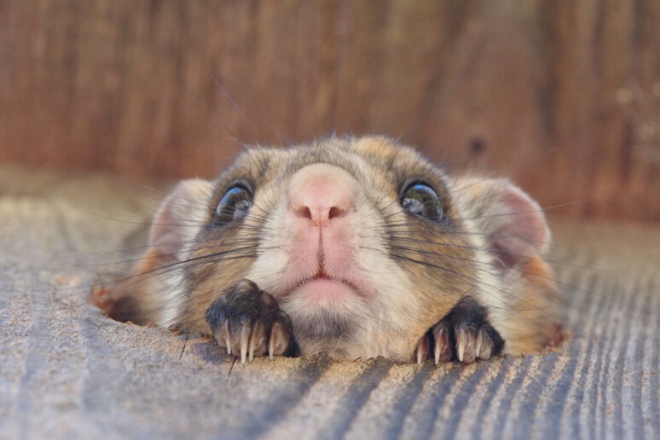By Localiiz
Branded | 17 May 2024
By Localiiz
Branded | 14 May 2024
Copyright © 2025 LOCALIIZ | All rights reserved
Subscribe to our weekly newsletter to get our top stories delivered straight to your inbox.
Though some acute fans of Japan might be aware of the town of Karuizawa, thanks to a history involving the Emperor and John Lennon’s visit to a bakery there once upon a time with Yoko Ono, many are unaware of its breathtaking nature and remarkable wildlife.

Karuizawa in Japan is relatively unknown to the Western world, but in its home country, it was essentially put on the map by the Emperor who played tennis there whilst courting his future wife—if you’ll excuse the pun. Today, it’s predominantly used as a holiday-home destination for Tokyo dwellers looking to escape city life. And yet, just 90 minutes away on the Shinkansen, it’s surprising that not more tourists from further afield are yet to discover this beautiful part of Japan.The town is located in the mountains near Nagano. Surrounding forests make it popular with cyclists and hikers, while in the winter, skiing and the hot springs are first choices. Yet it’s the stunning landscape and the wildlife that dwell within it that really make Karuizawa such an appealing destination in Japan.

Picchio—a wildlife research centre right in the heart of Karuizawa—are the experts who are striving to not only preserve the wildlife and ecosystem but to educate and excite visitors. Among the number of exciting eco-tours are bird watching and Japanese serow watching; the Japanese serow is a goat-antelope and a protected species.A real treat though is bearing witness to the awakening and nocturnal activities of the Japanese giant flying squirrel. At 6pm—on the dot—every day, visitors can gather beneath the trees to witness the animals wake up from their day-time sleep. Small cameras have been fitted into the nest, so that you can watch them stirring from their slumber on a screen down below, making it feel as though you’re in a real-life animal documentary.Once the animal has poked its head out of the hollow of the tree, it then quickly climbs out of its burrow and scampers up to the top of the tree and then suddenly drops, spreading its enormous wings and gliding across to the next tree where it lands with a little thud, and then proceeds to scurry up to the top of that tree and so forth until finding its meal for the night. Measuring in at 80 centimetres from head to tail, the Japanese giant flying squirrel is the second-largest in the world, just two centimetres shorter than its Malaysian cousin. When in flight, it’s the size of a pillowcase, so that in a split-second you get this strange, dark, and ethereal form gliding above you before your eyes.

One of Picchio’s main responsibilities is its bear conservation work. They have 21 dens in the surrounding area and 30 collared bears who are all monitored daily; such is the level of expertise, skill, and dedication of its staff that they are capable of recognising each bear just by its face. Karuizawa’s Asian black bear population steadily increases too, with four cubs born in the last year.The threats faced by the bears are forestry, illegal hunting (which is much rarer these days), and the male bears themselves who can be aggressive towards cubs. On the flip side though, with the Asian black bear population in Karuizawa thriving, it’s now become a threat to the rabbit population, as there’s more competition for food; the bear’s diet consists of acorns and berries.The Picchio staff delighted in recounting a story to me of a black bear that got really fat once. They couldn’t tell why, so they followed him one night and he led them to a bakery’s outdoor bin, where the bear discovered a number of cakes that would be thrown away at the end of each working day!Since then, Picchio has successfully introduced locked cages on all outdoor bins, so that the animals can no longer get in. Picchio also uses highly-trained dogs now too to help keep the bears away from residential areas. Though not a threat to humans—since they’re vegetarian—you still wouldn’t want an Asian black bear charging at you at 40 kilometres an hour!

The Karelian Bear Dog is a Finnish breed and Picchio introduced the first generation of them into Asia in 2004. They undergo a rigorous two-year training programme before they’re able to work alongside the staff, and even then, the selection process is extremely strict. Closer to a wolf than other breeds of dogs, back home in Finland—and across Russia too—the Karelian Bear Dog is hailed as a national treasure thanks to its fearless nature and rapid reflexes—perfect attributes for hunting large game animals and bears.After hosting a successful Rugby World Cup and with the sporting world due to return to Japan in 2020 for the Olympics, the country of the rising sun continues to top new year trends for travel destinations. Karuizawa should be taken into that consideration for anyone longing for alternative destinations in Japan.
Top